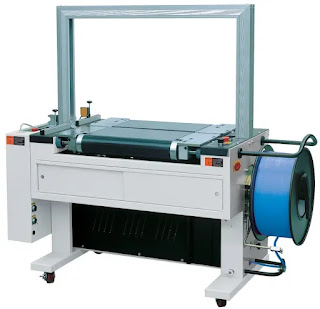Strapping Machines
Strapping machines, also known as banding machines or strapping equipment, are devices used to securely bundle together items or packages using straps or bands made of materials like plastic, steel, or polyester. These machines are commonly used in various industries for packaging, shipping, and storage purposes. They help improve the efficiency and consistency of strapping operations while ensuring that packages are securely fastened. Here are some key aspects of strapping machines:
1. Types of Strapping Machines:
• Automatic Strapping Machines: These machines are fully automated and are suitable for high-volume strapping applications. They can feed, tension, seal, and cut the strap without much human intervention.
• Semi-automatic Strapping Machines: Semi-automatic machines require some manual effort, such as placing the strap around the package, but they automate the tensioning, sealing, and cutting processes.
• Manual Strapping Tools: These are handheld tools that are operated manually. They are used for low-volume strapping or in situations where portability is essential.
2. Strap Materials:
• Plastic Strapping: Commonly made from polypropylene or polyester, plastic straps are versatile and cost-effective. They are suitable for light to medium-duty applications.
• Steel Strapping: Steel straps provide high tensile strength and are used for heavy-duty applications or when extra security is required.
3. Applications:
• Strapping machines are used in various industries, including manufacturing, distribution centres, agriculture, construction, and more.
• They are often used to bundle together products, secure loads on pallets, reinforce corrugated boxes, and improve the stability of packages during transit.
4. Benefits:
• Improved Efficiency: Strapping machines can significantly speed up the strapping process, reducing labour costs and increasing productivity.
• Consistency: They provide consistent tensioning and sealing, reducing the risk of package damage or failure during shipping.
• Cost Savings: Properly strapped packages are less likely to be damaged, leading to cost savings in terms of reduced product loss and insurance claims.
• Worker Safety: Automated machines reduce the physical strain on workers, potentially lowering the risk of injuries.
.webp)



.png)
.png)




.webp)
